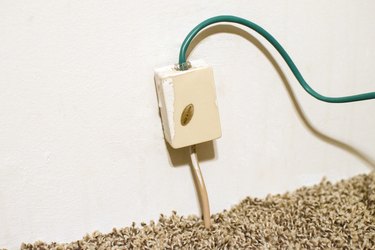
Telephone wiretapping and electronic eavesdropping allow others to access your telephone signal or listen in to your telephone conversations. Determining whether someone is doing either will require you to work with your telephone company as well as be your own investigator.
Actions
Video of the Day
Step 1

Call the telephone company that provides your service for your home telephone. The telephone company will normally check the line for taps without cost to you and advise you if there is an illegal device monitoring your telephone line. In addition, the telephone company will notify law enforcement officials if there is an illegal wire tap detected.
Video of the Day
Step 2

Inspect your home telephone line physically for devices that might be attached to your telephone line or connected to the telephone boxes on the interior or exterior of your home.
Two products that can be used as attachments on the telephone line are the pen register and the trap and trace device. The pen register will record those numbers dialed out on your phone, while the trap and trace device will record the numbers of incoming calls. Either of these products can be used legally by state or federal organizations with a court order and by some telephone companies.
Step 3

Monitor the charge life of your cell phone and its temperature. If you believe that your cellular calls are being listened to, your cell phone battery will have a short charge life because when your cell phone is being tapped, the tap uses the charge from the cell phone as well. In addition, the battery will be warm to the touch even when the phone has not been used.
Step 4

Monitor your cell phone and note instances in which the cell phone lights up for no apparent reason. If this occurs often, your cell phone may be tapped.
Step 5

Listen for beeps of clicks on the cell phone line when you are using it. While these noises might not indicate that your line is tapped on a home phone, they are indicators of wiretapping on a cellular line.